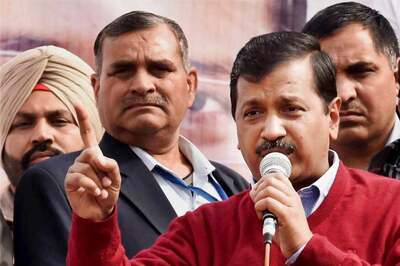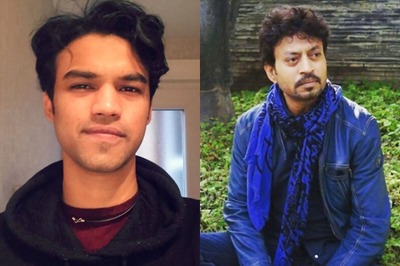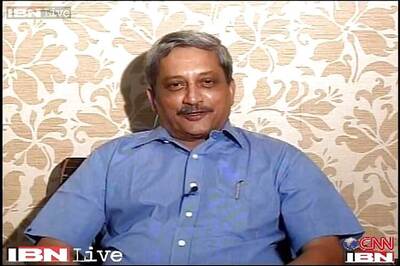
views
Before India became a Republic, BR Ambedkar, the father of the Indian Constitution had very aptly observed, “On the 26th of January 1950, we are going to enter into a life of contradictions. In politics, we will have equality and in social and economic life we will have inequality... We must remove this contradiction at the earliest possible moment..."
Seventy-two years after the Independence, that 'earliest possible moment' is yet to arrive, and Anubhav Sinha's latest film, Article 15, is an excellent reminder of how far away we are from it.
Article 15 is a socially responsible film and perhaps the first one in mainstream Bollywood to focus on atrocities inflicted on Dalits. It is restrained yet cinematically impactful, and portrays a realistic picture of India, steeped deep in the caste system. However, despite all these qualities, it will perhaps serve us better to remember that this is just a film and the quick fix solutions offered in it, unfortunately, aren't as easy to come by in reality.
In fact, if you think about it, if at all the Brahmin 'saviour' cop, Ayan Ranjan (Ayushmann Khurrana) existed in reality, he would have perhaps been transferred before he could even get the printer fixed to get a copy of Article 15 for the bulletin board. Chances are that the caste lines that divided not just the villagers, but also the police force in the film would not have been erased by an angry outburst of an 'outsider' cop.
What are the odds that the poor parents of the two Dalits girls who were gang-raped and murdered will get justice in reality?
Or a rapist cop, who until the end of the investigation kept his mouth shut and hoped to get away with his crimes will suddenly grow a conscious and commit suicide?
Article 15 looks very real because it draws from some horrifying real instances of casteist oppression, but it is still far away from the grimness of the reality that we live in.
The basic premise of Article 15 is borrowed from the rape and murder of two teenage girls in Badaun, Uttar Pradesh. Ewan Mulligan, the cinematographer of Article 15, recreates a haunting scene from the shocking photograph of the two girls hanging from the mango tree that sparked worldwide outrage in 2014.
The film borrows many facts from the real case. For example, the girls were allegedly raped and killed because they asked a raise of Rs 3.
A group of cops and local men were accused of raping the minors, many false reports were fed to the media, and investigative journalism be damned because all these reports found their way to the newspapers. The film also addresses the initial claims of the local police as well as the CBI that the girls were either murdered by their family members or they committed suicide.
The film, however, offers us a hero who fights for these girls and their families. It gives us individuals, who can, without an ounce of doubt be identified as villains. And above all, it has a glimmer of hope in the end, as the 'villains' (the rapists and murderers) either end up behind bars or dead, and the third girl who was also raped by 'upper' caste men in the film, is found alive.
In reality, however, the Badaun rape and murder case played out differently. There was no liberal 'upper' caste cop at the helm of things, and when CBI took over the case, the families of the two victims were reportedly harassed and threatened by them for days. In Priyanka Dubey's book, No Nation For Women, the author quotes one of the victim's fathers, who had reportedly begged for security for his family while the court case was on and the accused were out on bail. But, the police protection that was offered by the court was removed by the local authorities.
Two accused in the case even confessed their crimes but when CBI finally submitted their report to Badaun's POSCO court, they concluded that the girls had committed suicides, and they were not sexually assaulted. There were also many conflicting reports about the case, making it hard to identify if the girls were at all from any Dalit community.
The parents of the victims vehemently opposed to CBI's claim, and the Posco court too rejected their report and summoned the accused. This happened in October 2015, and since then Indian media has perhaps stopped following up this case because there are hardly any reports that say if the court case is over and if the accused were ever punished.
Unlike the film, reality doesn't come in the neatly tied end where the name of the old lady is drowned by the noise of the passing vehicles, and all policemen happily eat the meal she had cooked without bothering about her caste. Caste identities in India are far more deep-rooted than that. In fact, data shows that 65% of hate crimes in India are directed towards Dalits, and rape is still very much a device of subjugation that is used by upper caste men. According to an NCRB report (National Crime Record Bureau, 2016), more than four Dalit women are raped every day, and there is, of course, no accounting for unreported cases.
There is no denying the fact that Article 15 is a cleverly crafted Bollywood movie. It takes the simplistic 'hero's journey' storytelling mechanics and examines several uncomfortable truths about our society very expertly. One of the most significant moments in the film is when Khurrana's character complains to his girlfriend about the fraught caste lines in Indian villages implying that such regressive traits are limited to rural India, to which she retorts that it is not like their own mothers did not separate the utensils for Dalits, immediately pointing out the inherent hypocrisy of a certain section of the society, that is generally liberal, urban and 'upper' caste, and sees themselves as allies of Dalits.
It is perhaps the same hubris of this certain liberal section that Sinha also displays when he justifies choosing a Brahmin hero, to draw attention to the caste system in his film. In a recent interview to Scroll.in, the filmmaker said, "Ayan is not a Brahmin because only Brahmins can save Dalits, though I understand that some people see it that way... I wanted him to have the power to go either way, but he chooses the right way."
While the ethical dilemma of a hero 'to choose between the right and the wrong' makes for a wonderful storytelling device, and Khurarna plays Ayan very convincingly, one cannot help but wonder--when will Bollywood let the oppressed speak for themselves? Don’t 'they' deserve a choice? Don't they deserve to be heroes?
Read: Ayushmann Khurrana's Film is Important, Powerful and Superbly Made
There are many things that Article 15 gets right and perhaps Sinha's heart is also at the right place when he said, "the privileged should challenge the privilege." The first thing that the so-called 'upper' caste allies need to understand is that they can be better allies by denouncing the caste system altogether, which has institutionalised a socially accepted hierarchy of discrimination. But, unfortunately, none of this translates onto the screen, where we see the privileged upper caste cop saving the underprivileged 'poor Dalit gaonwalas' by bringing them justice.
Read: Ayushamnn Khurrana's Article 15 Screening Stopped in Kanpur
A lingering question that bothered me about this film was why couldn't Nishad (Mohammed Zeeshan Ayyub) have been the hero of Article 15 ? Nishad-- the guy who didn't get time to buy flowers for his girlfriend because he had a revolution to organise, who loved science and writing like Rohith Vemula but could focus on neither because he and his people were constantly being discriminated against in the name of caste, does he not make a good hero? When faced with betrayal and death Nishad had asked, "did you think I am the last of them?" and yet, his story was just a sub-plot. Why couldn't Ayan had been the second fiddle to Nishad for once? Is it because Nishad does not make a relatable hero for the multiplex going upper class, who are watching this film and showering praises? I wonder.
Follow @News18Movies for more



















Comments
0 comment